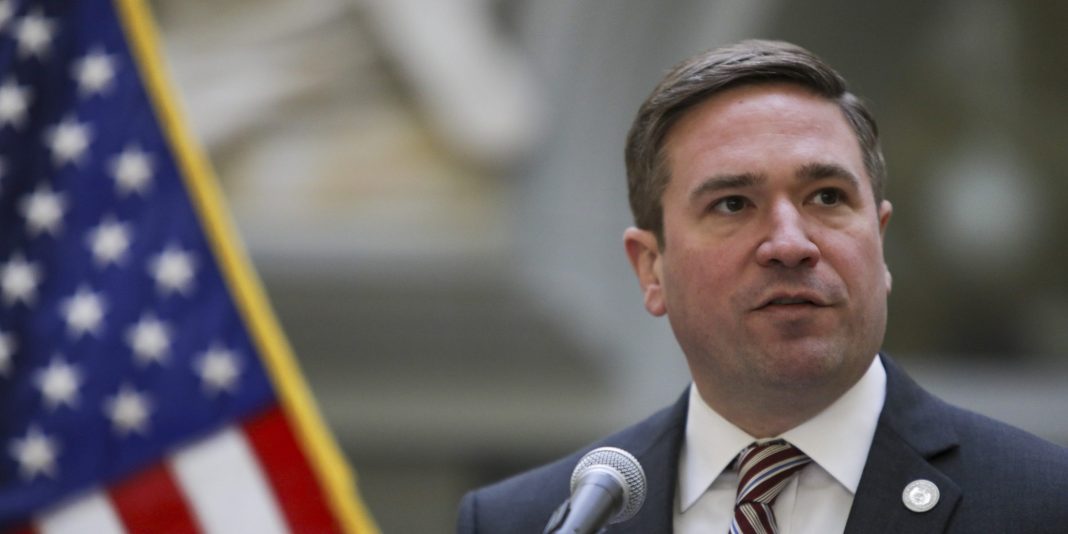Title: The Contamination of Evidence: A Critical Examination of Marcellus Williams’s Case
Introduction:
In the case of Marcellus Williams, who is scheduled for execution in September, the murder weapon played a crucial role in proving his guilt. However, recent revelations of evidence mishandling and contamination have raised serious doubts about his conviction. This article delves into the details of the case, highlighting the significance of the murder weapon, the actions of the prosecutor Keith Larner, and the implications for Williams’s conviction.
The Significance of the Murder Weapon:
Long before the trial began, Assistant Prosecuting Attorney Keith Larner dismissed the butcher knife used in the murder as “worthless” evidence. However, the knife became central to proving Williams’s guilt, and he sought DNA testing on the weapon before his trial. Unfortunately, the judge denied his requests, leaving the knife as the key piece of evidence against him.
Evidence Mishandling and Contamination:
During a recent hearing, Larner defended his actions, stating that there was nothing to link anyone to the crime on the knife. However, new analysis revealed that Williams’s DNA was not on the knife, raising questions about the source of the unknown male DNA found. Larner’s repeated handling of the weapon without gloves and the possibility of contamination became the focus of current prosecutor Wesley Bell’s efforts to overturn Williams’s conviction.
Prosecutor’s Defense and Constitutional Error:
Larner, backed by the Missouri Attorney General’s office, argued that his handling of the evidence was routine and not done in bad faith. To prove a constitutional error, Bell’s office would have to demonstrate that the evidence was mishandled intentionally. However, the decision on whether Williams’s conviction should be overturned now rests with Judge Bruce Hilton, who must determine whose version of the truth is correct.
Questionable Witnesses and Jury Selection:
The case against Williams relied heavily on the testimony of jailhouse informants, who had a history of run-ins with the law and received payment for their testimony. Bell also cited issues with the quality of Williams’s legal defense and alleged misconduct by prosecutors in striking qualified individuals from the jury pool based on race. These factors cast doubt on Williams’s guilt and raise concerns about the fairness of his trial.
The Role of Larner and the Murder Weapon:
Larner’s handling of the murder weapon came under scrutiny during the hearing. Larner claimed that the weapon was irrelevant because he believed the killer had worn gloves. However, there is no concrete evidence to support this claim. Larner admitted to handling the knife multiple times without wearing gloves, which contradicted standard forensic practices. This revelation surprised one of Williams’s trial attorneys, who testified that he had been required to wear gloves when handling evidence related to the case.
The Fight for Williams’s Freedom:
Prosecutor Bell’s office struck a deal with Williams, conceding constitutional error and removing the death penalty from the table. Williams agreed to an Alford plea, maintaining his innocence while accepting a life sentence. However, the attorney general intervened, arguing that the deal was invalid, and Williams should face execution. The Missouri Supreme Court ordered a hearing on Bell’s motion to vacate the conviction, which will determine the fate of Williams’s case.
Conclusion:
The contamination of evidence and mishandling of the murder weapon have cast doubt on Marcellus Williams’s conviction. The actions of prosecutor Keith Larner, the credibility of witnesses, and the fairness of the trial have all come into question. As Judge Hilton weighs the evidence and arguments presented, the fate of Williams’s conviction hangs in the balance. The case serves as a reminder of the importance of preserving the integrity of evidence and ensuring a fair trial for all defendants.


